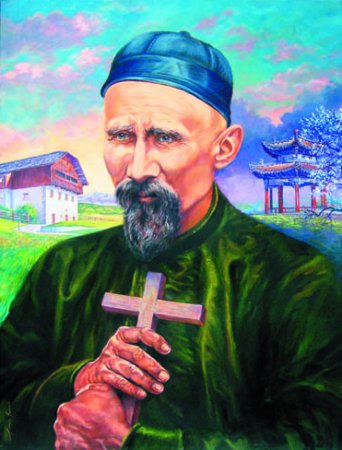(Tuesday 6th Week of Easter)
Let us say one night, a power interruption suddenly occurs and your room is completely wrapped in darkness. Now you find yourself with nothing to do except play with your mobile phone. Unfortunately, you have forgotten where you placed it. So, you reached for the lamp inside your drawer and started looking for your phone. But let me ask you an obvious question, how do you use your flashlight to find something in darkness? Of course, your response would be, point it away from you but to the things in front in order to illumine the things before you and let you see what you are looking for. Interestingly, the light is directed not to ones face; otherwise, it will blind him or her and fail to see properly.
My dear friends, this is also how the Holy Spirit, the Advocate works (more or less) in our lives of faith as Jesus has demonstrated to his disciples in our Gospel today. In the words of Jesus, “when he comes, he will show the world how wrong it was, about sin, and about who was in the right, and about judgment.” (Jn 16, 8) Positively formulated, the work of the Holy Spirit is like a flashlight that illumines, and provides light for us to see the truth of things.
In our Gospel today, this work of the Holy Spirit of illumination is specified in three ways:
(a) that the basic sin was and is refusal to believe in Jesus. Sinning is not how much lies about this thing or that thing have we made this week. Rather it is about how our lives speak of our faith in Jesus. Do our lives speak of our fidelity to Jesus or of our denial of him? I believe your studies in theology have told you that sin is essentially the refusal, that is, denial of God.
(b) that, although Jesus was found guilty and apparently died in disgrace, in reality righteousness has triumphed, for Jesus has returned to his Father. Others would say that the peak moments of Jesus’ life is the Paschal Mystery, that is, the passion, death and resurrection of Jesus. This is so, in as much as by his passion, death and resurrection, what Jesus lived and shared to his disciples by his extensive teaching finds not only its validation but its substance as well. Thus, without, the paschal mystery, our faith would make no sense.
(c) finally, that it is the ruler of this world, Satan, who has been condemned through Jesus' death. Satan, the devil, evil, death or whatever its name might be personifies all that is opposed to goodness. Greed, malice, hopelessness, indifference to the needs of others are some of its contemporary forms. Again, through the paschal event, more particularly Jesus’ dying on the cross, the prince of this world lost its power, that is, death no longer has the gripped upon humanity because Jesus has offered life to the full for all. Thus, a person of faith is not tainted by greed, malice but rather shows concern for others.
To end this short reflection, let me share with you a story of the great Norwegian explorer Ronald Amundsen, the first to discover the magnetic meridian of the North Pole and to discover the South Pole. On one of his trips, Amundsen took a homing pigeon with him. When he had finally reached the top of the world, he opened the bird's cage and set it free. Imagine the delight of Amundsen's wife, back in Norway, when she looked up from the doorway of her home and saw the pigeon circling in the sky above. No doubt, she exclaimed, "He's alive! My husband is still alive!"
Brothers and sisters, in the coming Sunday is the feast of the Ascension of Jesus. This feast is a strong reminder that Jesus is no longer with us in person because he is now with the Father. But at the same time he remains and continuous to be with us in the Spirit because he has sent the Advocate, the indication of his presence in our midst. Let us then constantly remind ourselves of Jesus words in today’s Gospel, “it is better for you that I go. For if I do not go, the Advocate will not come to you. But if I go, I will send him to you.”(Jn 16, 7)




